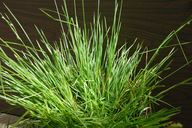Kingdom Plantae Family Cyperaceae Scientific name Carex albida Rank Species | Order Poales Genus Carex Higher classification Sedges | |
 | ||
Similar Sedges, Carex abrupta, Carex angustata, Carex albonigra, Carex amplifolia | ||
Carex albida is a very rare species of sedge known by the common name white sedge. It is endemic to Sonoma County, California, where it is known only from one occurrence at Pitkin Marsh, a wetland between Forestville and Sebastopol. There are fewer than 1000 plants remaining, and likely fewer than 300 according to more recent estimates. It is a federally listed endangered species.
Carex albida has been found to be part of the more common and previously identified species Carex lemmonii.
This sedge produces a dense or loose clump of erect stems 40 to 60 centimeters tall from a network of short rhizomes. The inflorescence is a cluster of 5 to 7 spikes over 15 centimeters long. Staminate flowers are located mainly on the terminal spike, while pistillate flowers are mainly located in the lateral spikes. The fruit is covered in a sac called a perigynium, which is green with a white beak.
The plant has been reduced to its current small population size by alterations in its wetland habitat, which resulted in the destruction of a few other known occurrences. Since it was added to the endangered species list, two new colonies of the plant have been discovered, but these are so close to the single previously known population that they do not count as new occurrences. The colonies are scattered across 5 acres (20,000 m2) of a 27-acre (110,000 m2) tract. As with other plants that reproduce vegetatively by cloning from their rhizomes, the number of true separate individual life forms is hard to estimate, so researchers count visible stems; a recent count revealed fewer than 300, a decrease from nearly 1000.
This sedge occurs near another rare local endemic, the Pitkin Marsh lily (Lilium pardalinum ssp. pitkinense).
